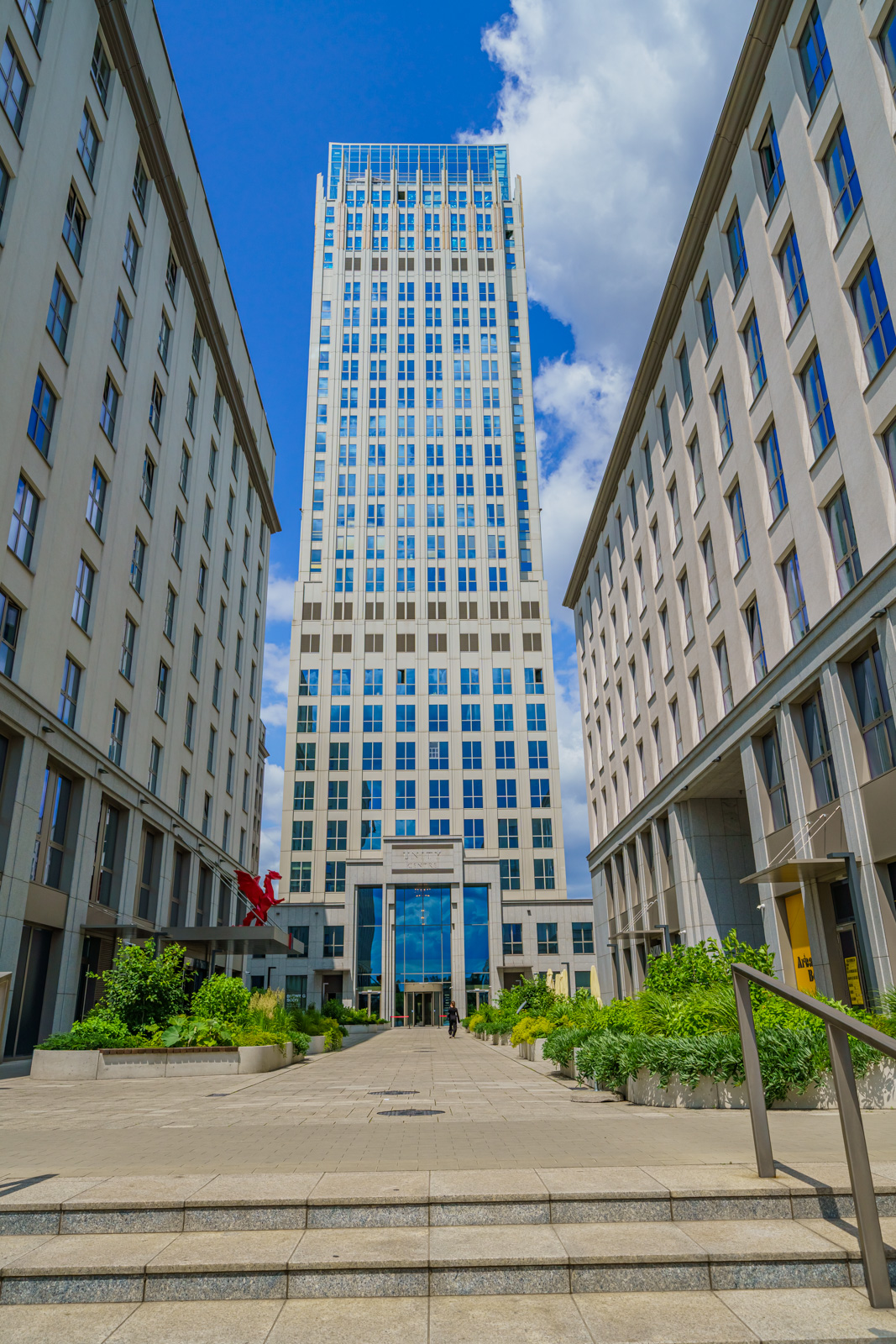A Concentration of New Office Space in Central Zones
Since the start of 2024, three-quarters of newly completed office space has been located in Warsaw’s central zones. By the end of Q3 2024, the total stock of modern office space in Warsaw reached 6.24 million sqm. Between January and September 2024, developers delivered over 70,000 sqm of new space to the market, including the modernized Saski Crescent (15,500 sqm, CA Immo), Vibe A (15,000 sqm, Ghelamco), and Lixa D and E (9,300 sqm and 16,900 sqm, respectively, Yareal). Notably, 76 percent of this new space was developed in Warsaw’s central office zones.
Daszyńskiego Roundabout Emerges as Warsaw’s Largest Office Hub
Emilia Trofimiuk, Research Manager at AXI IMMO, comments: “We are seeing a gradual increase in developer activity in Warsaw’s office market, especially in central areas. The Centre-West office subzone around Daszyńskiego Roundabout has 1.15 million sqm of existing office space, comprising around 18 percent of the city’s total office stock. Meanwhile, the Warsaw office market has 15 percent more new supply under construction compared to last year, reflecting a steady recovery in developer activity and future market growth.”
Office Development on the Rise
Currently, over 280,000 sqm of modern office space is under construction in Warsaw, representing a 15 percent year-on-year increase, with about 200,000 sqm set to be completed by the end of 2025. Developers are largely focusing on central areas, where 82 percent of new projects are located. One notable project, The Form, spanning 28,300 sqm, is on track to be completed by the end of 2024. Other key projects underway include The Bridge (47,000 sqm, Ghelamco), Upper One (35,900 sqm, Strabag), and V Tower (32,700 sqm, being modernized, Cornerstone).
Służewiec and Żwirki i Wigury Lead in Available Office Space
At the close of Q3 2024, Warsaw’s office market vacancy rate stood at 10.7 percent (-0.2 percentage points quarterly and +0.1 percentage points year on year). The highest vacancy rates were recorded in Służewiec (19.7 percent) and the Żwirki i Wigury Street corridor (15.2 percent).
Tenant Activity Remains Stable
Since early 2024, gross take-up in Warsaw’s office market has reached roughly 490,000 sqm, indicating stability compared to the same period in 2023. From January to September 2024, the highest leasing activity was in the Centrum, Służewiec, and Central Business District zones. New agreements made up 44 percent of all transactions, while expansions and self-use spaces accounted for 7 percent and 6 percent, respectively.
Largest Transaction in Q3 2024
Bartosz Oleksak, Associate Director in AXI IMMO’s Office Department, notes: “Tenants from sectors like banking, insurance, IT, business services, and manufacturing have been especially active this year. Relocations from nearby office zones to the Daszyńskiego Roundabout area are a notable trend, highlighted by Santander Bank’s move from the Central Business District to The Bridge building in the Centre-West zone, where they pre-leased 24,500 sqm. AXI IMMO also assisted a client relocating from Mokotów-Służewiec to a 1,300 sqm space near Rondo Daszyńskiego.”
Stable Rental Rates
At the end of Q3 2024, asking rents in Warsaw’s prime central office buildings ranged from €19.00 to 27.00 per sqm per month, with some premium locations reaching €30.00 or higher. In non-central districts, asking rents began at around €10.00 per sqm per month.
Evolving Tenant Preferences and New Workplace Norms
Jakub Potocki, Associate Director at AXI IMMO, observes, “We are seeing a shift toward longer lease terms, with 7-year leases becoming more common. Following the pandemic, companies are optimizing their office spaces, often relocating to more desirable areas and adapting workplaces to meet the needs of a hybrid workforce. Shell and core fit-out costs remain around €800-900 per sqm. The office sector in Warsaw is also seeing older B-class office buildings repositioned or converted to residential use, particularly in the Służewiec district. Additionally, some older office buildings are being demolished to make way for modern office projects, such as the replacement of the Atrium International building with the upcoming Upper One project. New developments increasingly incorporate ESG-friendly features, including green spaces and community amenities, alongside technology upgrades aimed at reducing energy costs.”







